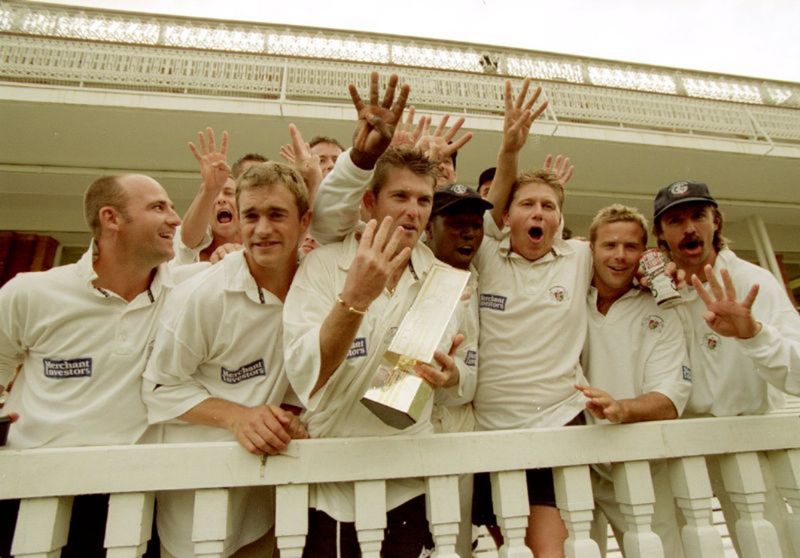- Home
- News, Articles & Reviews
- All Sport
- Cricket
- Cycling
- Football
- Golf
- Horse Racing
- Rugby Union
- Angling
- Archery
- Athletics
- Basketball
- Bowls
- Boxing
- Croquet
- Dance
- Darts
- Diving
- Duathlon
- Equestrian
- General
- Gymnastics
- Hockey
- Martial Arts
- Modern Pentathlon
- Motorsport
- Mountain Biking
- Netball
- Padel
- Parasport
- Polo
- Powerboating
- Powerlifting
- Rowing
- Rugby League
- Running
- Scuba Diving
- Shooting
- Skiing
- Skittles
- Snooker
- Squash
- Swimming
- Table Tennis
- Tennis
- Triathlon
- Tug of War
- Walking
- Walking Football
- Water Polo
- Weightlifting
- Wheelchair Tennis
-
Sport
- All Sport
- Cricket
- Cycling
- Football
- Golf
- Horse Racing
- Rugby Union
- Angling
- Archery
- Athletics
- Basketball
- Bowls
- Boxing
- Croquet
- Dance
- Darts
- Diving
- Duathlon
- Equestrian
- General
- Gymnastics
- Hockey
- Martial Arts
- Modern Pentathlon
- Motorsport
- Mountain Biking
- Netball
- Padel
- Parasport
- Polo
- Powerboating
- Powerlifting
- Rowing
- Rugby League
- Running
- Scuba Diving
- Shooting
- Skiing
- Skittles
- Snooker
- Squash
- Swimming
- Table Tennis
- Tennis
- Triathlon
- Tug of War
- Walking
- Walking Football
- Water Polo
- Weightlifting
- Wheelchair Tennis
We are hiring! Please click here to join our growing magazine delivery team in Gloucestershire!
Areas
Sport
Archive

Tim Hancock has proved himself to be a cut above both on and off the pitch
Author: Roger Jackson, Posted: Wednesday, 24th January 2018, 09:00
Tim Hancock was about to have his hair cut at the barber’s just a well-struck square cut from where he lives when The Local Answer called.
“I’ve been going to the same place for the past 26 years ever since I started playing cricket for Gloucestershire,” he chuckled.
“I don’t have to tell them what I want, they just cut it.”
So any particular style?
“No,” he laughed, “I’ve had the same haircut for the past 20 years, it’s your classic number three on the back and sides with a bit more left on top.”
And while there were obviously no highlights in the Hancock barnet when he left the barber’s in Bristol, there were certainly plenty of highlights in his top-level cricket career which spanned 15 years with his adopted county and included those glory years in the late 90s and early and mid-noughties.
These days he is still very much involved with Gloucestershire as their head of talent pathway, responsible for finding the next Jack Russell, Syd Lawrence, Mark Alleyne (or Tim Hancock!) – a role that he thoroughly enjoys.
Now 45, the well spoken Hancock – a hard-hitting batsman who could bowl a bit of medium pace back in the day – was born in Reading and raised just outside Henley in leafy Oxfordshire.
He and his older brother Jonathan played a lot of sport in their formative years – rugby, hockey, cricket, squash, golf – and it will come as no surprise to anyone that the younger Hancock was a pretty decent sporting all-rounder.
He still plays off 10 at golf even though he admits he doesn’t play anything like enough, and after moving to Bristol at the start of the 90s he played national league hockey at Westbury.
But it was always at cricket that he excelled.
“I did quite well in junior cricket for Oxfordshire,” Hancock said. “I was playing for Oxfordshire Minor Counties when I was 18 and I was doing okay.”
So how did Gloucestershire get to hear about him?
“I got lucky,” he said. “I just turned up for a cricket trial that Stov [Andy Stovold] had organised in Cheltenham at the end of the 1990 season.
“It was played at the old Dowty Arle Court ground over three days and I played in the last two days.
“There were two mixed teams of 2nd team players and trialists. It’s probably fair to say that some of the 2nd teams players probably weren’t that interested.
“Anyway I got some runs and Gloucestershire were going through a bit of transition at the time. They were having a clearout of some of the old guard and they took me on.
“It was a case of being in the right place at the right time.”
And while that may have been the case, Hancock was not about to waste the opportunity that had been presented to him while still in his teens.
“At the start of 1991 I was in the 2nds and I got stuck in, I did quite well straight away,” he said.
Gloucestershire weren’t very strong around this time and it wasn’t long before Hancock’s runs earned him a chance in the 1st XI.
“If I’d been at somewhere like Middlesex I’d have had to wait a lot longer,” he said.
So who was his debut against?
“The touring West Indies,” he chuckled.
And how did he get on?
“I was a bit out of my depth,” he admitted. “Walsh and Ambrose didn’t play but Malcolm Marshall and Patrick Patterson did. I got one in the first innings and seven not out in the second innings.”
He also played against the touring Sri Lankans that summer without making too many and he was out for a duck in his first two Sunday League games.
“I was thrown in,” he recalled. “Mentally I wasn’t quite backing myself enough.”
But Hancock persevered and in the final championship game of the season against Sussex he hinted at better times ahead with his first 50.
He spent the winter playing cricket in South Africa and it wasn’t long before he was posting his first three-figure score for Gloucestershire – against the old enemy Somerset in their own back yard in Taunton.
That was in the first championship game of the 1992 season, but Hancock admits that it was a few more years before he felt he was a permanent fixture in the side.
“It does take a while,” he said. “When you’re young you don’t have all the tools that you need. You play a bit, then you get dropped.
“It can take time to understand what it is to be a professional cricketer.
“You go through periods of feeling established and then you get left out.
“It wasn’t until 1997 that I felt established and by then I’d played nearly 100 games.”
While Gloucestershire had relied almost exclusively on the remarkable Courtney Walsh to keep them competitive in the early 90s, by the mid-90s they were starting to improve as a team.
“We started to develop a good bowling attack,” said Hancock. “Mike Smith established himself and then Jon Lewis came along and by the mid-90s we were quite competitive.
“We were top of the county championship in the second week in August 1997 and had started to become a good team.”
Hancock’s position in those days tended to be at or near the top of the order.
“I played my best as an opener,” he said. “It’s a tough place to bat especially at Bristol where there is always something in it for the bowlers.
“I started off in the middle order but in those days we never really had a No.3. If I was doing okay at 5 or 6 I tended to be pushed up.”
Wherever he batted – and that was in most positions! – Hancock knew that he had to be right mentally if he was to succeed at a time when many of the best cricketers in the world were still plying their trade in the county game.
“The mindset around your cricket had to be right,” he explained. “It was easy for doubts to creep in, especially if you were a batter. You had to keep your levels of self-belief up.”
And that was something that Hancock managed to do for much of his career – most notably when he scored a career-best 220 not out at the end of the 1998 season.
That proved to be a momentous season for Gloucestershire because it turned out to be the last year that the great Courtney Walsh played for the county.
And while the word ‘great’ gets overused in sport, it certainly applies to the record-breaking West Indian.
“Sometimes when you’re young and trying to make your way in the game you don’t always recognise that you are around greatness,” said Hancock.
“But looking back you realise what fantastic players Walsh and Jack Russell were.
“Walsh was such a nice down to earth guy. He was a master of his craft. It would have been easy for him to have taken a step back but he always wanted to win, he was a real team man and had time for everyone.
“Jack was an incredible cricketer, he just never seemed to have a bad day when he was keeping.
“Neither of them ever blamed bad luck if things had gone wrong. They just got on with it and nearly always prevailed.
“They had incredible self-belief and were great role models.”
That self-belief was certainly starting to rub off on some of their team-mates.
“During the 90s we were putting together little pockets of really good cricket,” remembers Hancock. “But when it came to the big games we folded. We lost two or three quarter-finals where we choked horribly.”
Despite those setbacks Hancock still felt at the time that Gloucestershire were building towards something – although he admits he didn’t envisage the amazing run of success that they were about to enjoy.
So what turned them from the nearly men into a team of serial winners?
“John Bracewell’s arrival as coach in 1998 was a huge factor,” said Hancock.
“The right bloke at the right time with the right bunch of lads.
“It was World Cup year in 1999 and Walshy wasn’t available to us so the county brought in Ian Harvey. Nobody had heard of him.
“I think he’d played about 15 first-class games. Allan Border said he’d got something but John took a punt on him.
“When he came over we saw that he’d got a sharp outswinger and that he gave the ball a bit of a clatter when he batted, but what we didn’t realise was that he had this unbelievable ability to bowl at the death in one-day cricket and hold his nerve at big moments.
“He had no nerves. He just nailed his skills and that gave everyone confidence.
“The following year James Averis copied him so we had two phenomenal bowlers at the death.”
And while their ability to keep batsmen guessing at the business end of an innings – primarily with their wonderfully disguised slower balls – Gloucestershire were of course no one-man or two-man team.
“As a group we were very competitive,” said Hancock. “We were very athletic and much fitter than anyone else in terms of all-round athleticism.
“Winning became a habit and our self-belief just built up and up.”
Hancock played a key role as Gloucestershire racked up seven trophies in six seasons from 1999 to 2004, and was particularly prominent in 1999 and 2000 when Mark Alleyne’s men won what is still a scarcely believable five one-day trophies.
“It was incredible going to Lord’s and winning trophies,” said Hancock. “It was amazing, it’s what you dream of doing.”
And the modest Hancock certainly played his part.
“I did all right,” he said. “I had a couple of good days at Lord’s, it was nice to have contributed.” I had a decent record in the bigger games.
“I found the occasions uplifting. The atmosphere can sweep you along and I found it good for my game.”
And it wasn’t just Hancock who thrived on the big occasions.
“Sometimes our opponents would be a bit tentative but we nailed the big moments and nailed the big games,” he said.
So what was Hancock’s favourite final?
“It has to be the 99 Cider final against Somerset,” he said. “That had the best atmosphere although it was a game we didn’t quite nail.
“We should have won easily, we should have hammered them.”
Hancock made 74 in that match as Gloucestershire won by 50 runs.
“I got a few,” he said, “but I still regret not going on and nailing a 100, I should have done, definitely.
“We fell away a bit at the end of our innings but then had them 40 or 50 for 5.
“They thought they would win easily so it was nice to beat them.”
That wasn’t Hancock’s only half-century on the big stage either as he made 60 the following year in the Benson and Hedges Cup win over Glamorgan.
He also played in the 2004 C&G final although he didn’t bat as Gloucestershire cruised to an eight-wicket win over Worcestershire.
“I still felt part of it,” said Hancock. “It was another great occasion and nice to win.”
By now Twenty20 cricket had been introduced into the domestic cricket calendar but rather surprisingly, given his penchant for hitting the ball hard and a long way, it was not a competition that Hancock was too exposed to in his final years before leaving the county in the mid-noughties.
“I don’t know why I didn’t play a bit more,” he admitted. “I was in and out of the side, I’d have thought I’d have been quite good at it. I remember playing at Cardiff and getting 50-odd but I’d have played a lot more if I could.”
He wasn’t in the team that competed in finals day in 2003, but despite his limited opportunities he certainly liked the new format even though it tested players to the full.
“It was quite physically demanding on fielders,” he said. “Emotionally you were competing every ball and it was very demanding mentally.
“But what it did do was give players a bit more licence to express themselves.”
Since those early days of Twenty20 a lot has changed of course. Specialist T20 players have sprung up all over the world and batting records – and occasionally bowling records – are being rewritten almost every month.
And talking about cricketing records, there’s one that Hancock would not be too disappointed to see rewritten – although it’s unlikely to happen any time soon.
It’s not a T20 record either as Hancock explains.
“It was my first game as captain of Gloucestershire and it was a tour game against Zimbabwe at King’s in 2001,” he said. “It was in the days when Zimbabwe were good and it ended up being Gloucestershire’s highest ever run defeat.
“We didn’t have any bowlers. Lewi [Jon Lewis] got 8 for 90 but Andy Flower got a big hundred and Murray Goodwin got a double.
“They made millions and I broke my hand in the field.
“Then Heath Streak bowled us out for 150, they made another load and they beat us by 499 runs. It was embarrassing, a shambles.”
Fortunately for Hancock and Gloucestershire those types of performances were very much the exception, even though after winning five trophies in two years they endured two barren years before winning the C&G Trophy in 2003 and 2004.
“One of the hardest things for any team is to have sustained success,” said Hancock. “We did really well to follow up 99 with an even better season in 2000 but we couldn’t sustain it. People’s individual goals can change and the challenge is to keep it all together.”
By 2002 Craig Spearman had joined the county – “He was an extraordinary cricketer,” said Hancock, who also dropped down the order following the arrival of the Kiwi.
“I found batting there quite straightforward,” said Hancock, but the arrival of Jonty Rhodes and then Mike Hussey meant his opportunities became more limited, and at the end of the 2005 season he was released.
“I’d have liked to have played longer but everything comes to an end,” said Hancock. “It was my benefit year and I was trying to juggle everything.
“I started off in the team in 2005 but didn’t do great and that was it.
“I wasn’t too bitter or anything, it was time to move on. I’d had some great experiences and played with some fantastic people. I’ve got great memories.”
Hancock played Minor Counties cricket for Shropshire for a year before linking up with Filton College in Bristol where he was asked to set up a cricket academy.
“It was right place, right time,” said Hancock. “We had some good players – Chris Dent, Craig Miles, his brother Adam and James Bracey. I was there for seven years.
“Then in 2013 I took on the position of head of performance with the Gloucestershire Cricket Board before taking up my current role in February 2017.”
That job means he oversees the county’s cricket academy all the way down to the under-10s.
It’s a vital job, of course. He works closely with the county’s senior coaches Richard Dawson and Ian Harvey, as the county look to develop the next generation of cricketers, who can go some way towards achieving the level of success that the man now mentoring them enjoyed back in the day.
It’s a tough ask, but no-one is in any doubt that Hancock is the right man for the job.Other Images
Copyright © 2024 The Local Answer Limited.
Unauthorized use and/or duplication of this material without express and written permission from this site's author and/or owner is strictly prohibited. Excerpts and links may be used, provided that full and clear credit is given to The Local Answer Limited and thelocalanswer.co.uk with appropriate and specific direction to the original content.More articles you may be interested in...


© 2024 The Local Answer Limited - Registered in England and Wales - Company No. 06929408
Unit H, Churchill Industrial Estate, Churchill Road, Leckhampton, Cheltenham, GL53 7EG - VAT Registration No. 975613000You are leaving the TLA website...
You are now leaving the TLA website and are going to a website that is not operated by us. The Local Answer are not responsible for the content or availability of linked sites, and cannot accept liability if the linked site has been compromised and contains unsuitable images or other content. If you wish to proceed, please click the "Continue" button below:




